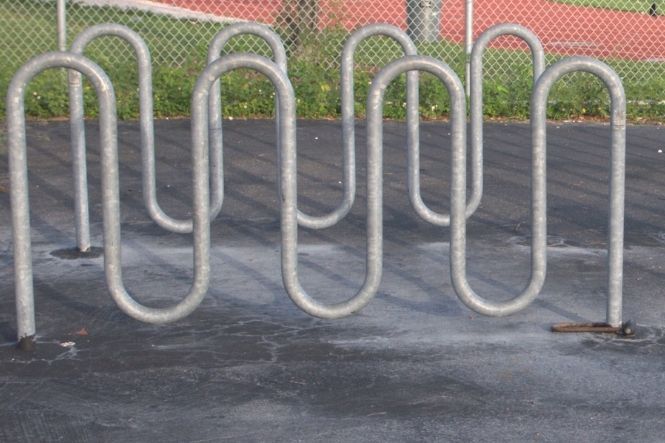armac driveways can be a beautiful addition to any property but it is sometimes hard to utilise the area. If you have a garage and are limited for storage space then perhaps fitting bike racks or storage racks could be ideal. In this blog we will discuss whether or not you can fit bike racks to a tarmac drive and also how to carry out the work safely if its possible.
Fitting bike racks or storage racks to a tarmac drive shouldn’t be a problem as long as the tarmac is in reasonably good condition and it was put down with a decent sub-base. The main points are to make sure there is something solid for the mountings to grip and that the Tarmac doesn’t start to deteriorate in the area where you’ve done the work.
Unless you want to cut out a section of the driveway and replace it with Concrete, with mountings set into that concrete, you basically have two options. The first is to drill holes in the tarmac to accept anchor bolts, and the second is to mount the bike rack, or storage rack, on concrete paving slabs making the whole thing too heavy for someone to lift.
Table of Contents
Finding the Right Layers
Drilling holes in tarmac is never going to be as secure as setting a mounting in concrete, but as long as you go deep enough you should get acceptable traction on an anchor bolt. Assuming this is a domestic situation, you should be looking to go at least two inches down and perhaps as many as eight to make sure that your anchor point will be in the sub-base layer.
On a light-use tarmac surface, such as a domestic driveway, there ought to be about an inch of surface dressing, another inch of binder (course tarmac), then six inches of sub-base. The sub-base should be granular material that will have been compacted during the construction of the drive, so this should hold expanding anchor bolts well enough.
Try a test drilling with a small bore drill in an unobvious area and see what comes up. If you decide to abandon the idea, you should be able to disguise the hole by pushing the tarmac back together on the next very hot day.
Anchor Bolts
Assuming you’re going ahead get hold of some anchor bolts, using the findings from your test drilling to determine the length that you need. Rubber sleeved anchor bolts are the best bet, the rubber expands as the bolt is tightened and is pushed out into the sub-bases.
These are difficult to find; they won’t be at your local DIY store, so metal sleeved anchor bolts are the next best bet. These will spread the load along the length of the whole fixing. Once you have your bolts, drill holes of the correct length and diameter and screw the fixing down.
The disadvantage of this, from a security point of view, is that the bolts can be undone by anyone with a correct sized spanner. You may need to consider a way of covering the nuts or finding bolts with non-standard heads if security is important.
Solution Number Two
Security comes into play with our other solution, bolting the bike rack or storage rack to concrete slabs. You need to drill holes in the slabs for the securing bolts and countersink them on the underside of the slabs to stop the bolt heads damaging the tarmac.
You also need to arrange the slabs so that the racks cross the dividing line between two or more slabs, which will make it harder for individual racks to be separated from the whole assembly. How you do this will depend on the exact construction of your rack.
Security Issues
This method is simple but relies on guess work. No matter how you arrange the blocks and secure them to the racks, if someone badly wants your bicycles all they have to do is turn up with a van and enough people to lift the whole assembly up and cart it away.
If you are just trying to keep the garden tidy, it could be a neat and simple solution which doesn’t damage the existing tarmac drive. But if preventing bicycles from being stolen is your first priority, this may not be the method for you.
Conclusion
In conclusion, if you’re fitting a bike rack or storage rack, go for the concrete. It’s stronger and will last indefinitely, but if you do have tarmac in good condition, pinning the rack to it is a quick and easy way of getting things organised.
On both options be aware that your tarmac drive may suffer around the fixing point as over time the weight loading will stretch out any stresses in the tarmac resulting in ripples or cracks appearing between there and your vehicle parking spots. In such a case the best solution is to fill and re-level the affected area.


